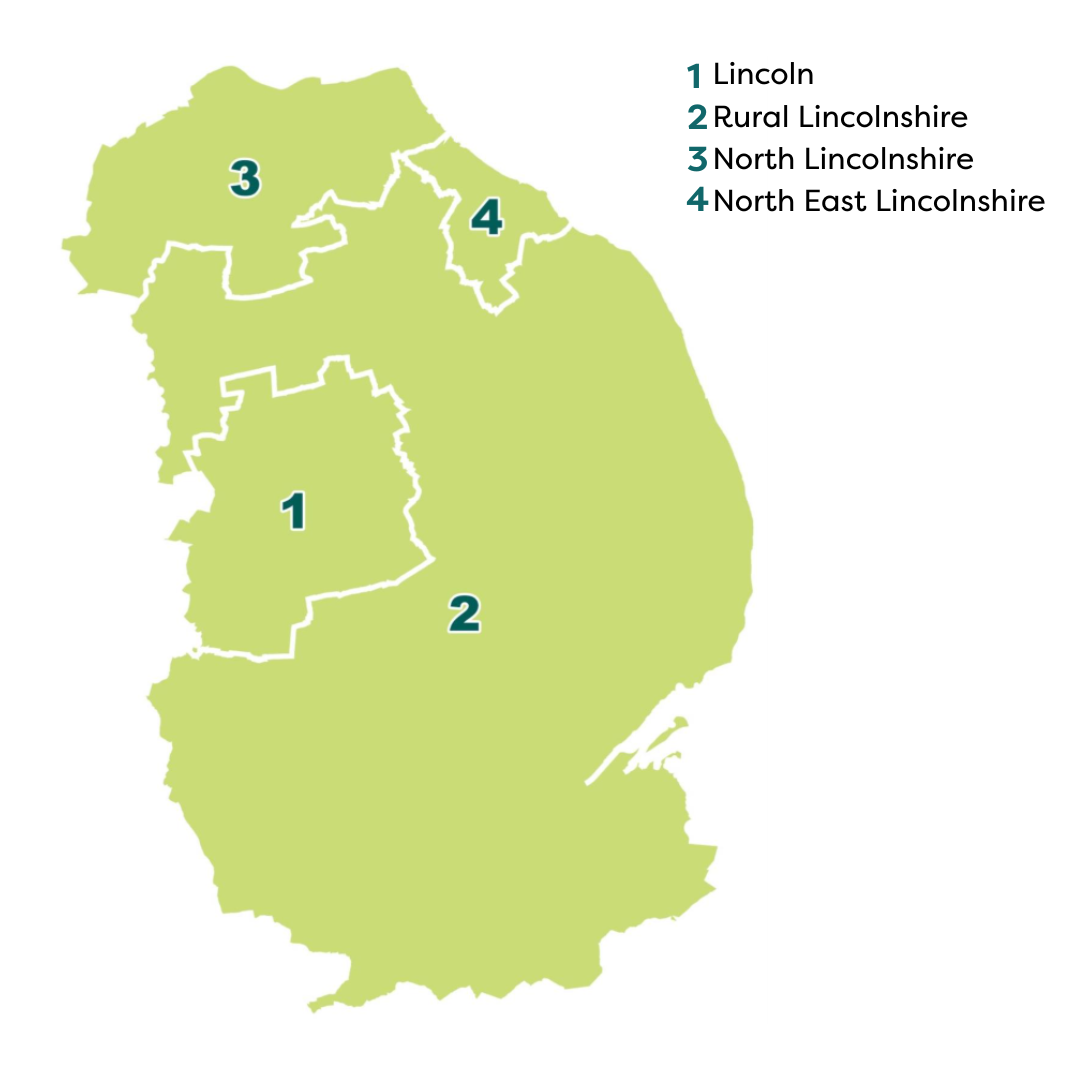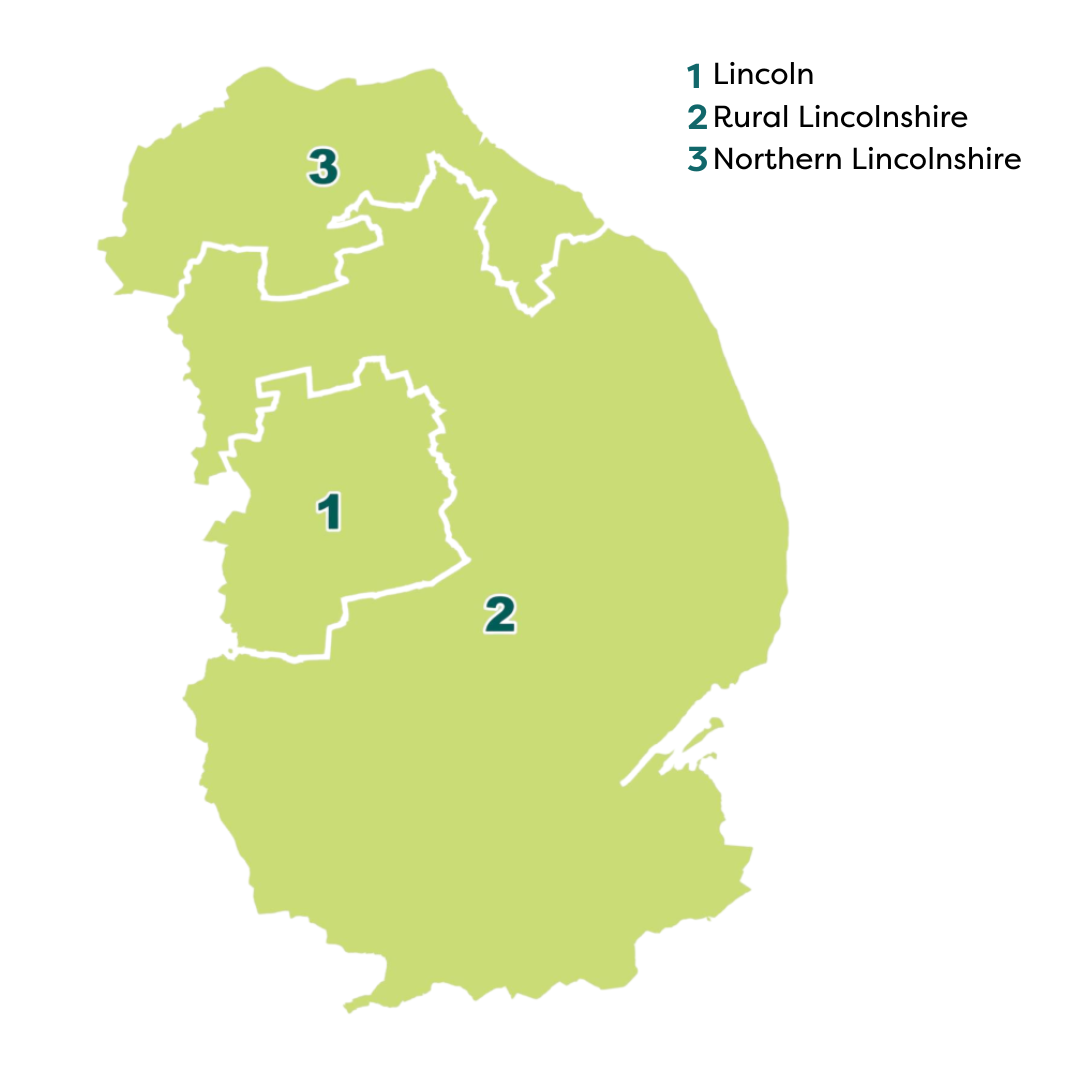City of Lincoln Council's Proposal
City of Lincoln Council’s outline proposal for local government reorganisation recommends the creation of an initial four-unitary model for Greater Lincolnshire, transitioning to three unitary councils over time.

This includes a proposal for three unitary councils over time:
- a new unitary council in the area currently served by North and North East Lincolnshire councils
- a new unitary council for rural Lincolnshire’s coastal communities, countryside and market towns
- a new unitary council for Lincoln, which expands the city’s boundaries

Click here to view a map that shows, by ward, our current proposed area for an expanded Lincoln.
The full list of wards included in the expanded Lincoln proposal are:
West Lindsey
Bardney
Cherry Willingham
Dunholme and Welton
Nettleham
Saxilby
Scampton
Sudbrooke
North Kesteven
Bassingham Rural
Bracebridge Heath
Branston
Heighington & Washingborough
Hykeham Central
Hykeham Fosse
Hykeham Memorial
Metheringham Rural
Navenby & Brant Broughton
Skellingthorpe & Eagle
Waddington Rural
Witham St Hughs & Swinderby
Lincoln
Abbey
Birchwood
Boultham
Carholme
Castle
Glebe
Hartsholme
Minster
Moorland
Park
Witham
The initial footprints and proposals for the three new councils are currently being refined, and we welcome the views of local communities, businesses, partners and stakeholders to help shape the final plans. These will make sense for Greater Lincolnshire residents now and for the future.
At the heart of our proposal is recognising the power of small city growth in delivering the UK’s economic and housing ambitions, the provision of services to communities that currently sit outside the city’s boundaries and the distinct needs of rural communities.
Our proposals are built around the following;
- Communities – services will meet the needs of local people. Decisions will be made closer to communities, giving residents and businesses a stronger voice in their area.
- Public Services – we will develop services that are built to last.
- Priorities - Greater Lincolnshire includes a thriving city, rural villages, market towns and coastal communities. Services will reflect the priorities of each of these areas.
Lincolnshire is the second largest county in England, with a population spread across the city, coastal areas and countryside. We propose new councils which are big enough to develop quality services but also close enough to understand and respond to local needs and ambitions.
The council boundaries from 1974 no longer make sense. They do not reflect how people live today or how local economies work. Our proposal sets out new boundaries that better match local identity and unlock the full potential of places like Lincoln, rural Lincolnshire and northern Lincolnshire.
Northern Lincolnshire
North Lincolnshire Council has a population of 171,336 and North East Lincolnshire has a population of 159,911; both are smaller unitary councils.
They were invited to work with the seven district councils and Lincolnshire County Council on Local Government Reorganisation proposals by Government earlier this year.
Currently, these councils would prefer to remain as existing unitary authorities. A proposal to combine North East Lincolnshire and North Lincolnshire would deliver on the Ministry of Housing, Communities and Local Government’s policy ambitions for consolidated local government and would support longer-term resilience and sustainability for these areas.
North Lincolnshire has a strong industrial base, including the British Steel plant in Scunthorpe, oil refineries at Killingholme, and significant food processing, logistics, and green energy sectors. Agriculture remains a key contributor to the local economy, and the area is well connected via the M180 motorway and the Humber Bridge. North East Lincolnshire's economy is supported by ports and logistics, food and drink, especially seafood processing, renewable energy and chemical industries.
It is well connected by road and rail, and the ports offer international freight routes. North Lincolnshire has a median age of 44.9 years, and 59.8% of the population are working-age adults (16-64 years). North East Lincolnshire has a similar age profile with a median age of 43.1 years and 60.2% of the population are of working age. North East Lincolnshire is more urbanised.
Options for combining services in North and North East Lincolnshire to meet the needs of their communities will continue to be explored.
Rural Lincolnshire
The Lincolnshire 2050 Vision characterised Lincolnshire as a ‘place of places’. Our proposals will respect the rich and diverse communities and places that are made up of rural and coastal communities and market towns, supporting individual places to prosper.
Lincolnshire covers an area of approximately 2.773 square miles and is the second largest county in England.
With a population of 789,502, it is one of the most sparsely populated areas in England. Population density in six of Lincolnshire districts ranges between 82 and 156 people per square kilometre, compared to City of Lincoln, which is 2,945.
Given its geography, Lincolnshire is a powerhouse of UK agriculture, producing the largest share of the UK’s potatoes, wheat, cereals and poultry, a significant portion of sugar beet and over 38% of the UK’s flower bulbs.
The economy is embedded in farming, food processing and rural trades. Lincolnshire produces 30% of the UK’s vegetables and has some of the most fertile soils in the country, especially in the South. Agriculture and food processing are major employers.
Lincolnshire has a highly integrated agri-food sector, including farming, food manufacturing, packaging, logistics and distribution, and the Port of Boston and the Port of Immingham, which export and import agricultural goods. Tourism and the visitor economy are important to our coastal communities.
Market towns like Horncastle, Louth, Sleaford and Spalding serve as service hubs for surrounding villages. It has one of the oldest age profiles in England, and isolation and loneliness among older residents are ongoing concerns. Transport and digital connectivity can be limited in rural areas and service provision can be less accessible in some places.
There are market towns and countryside villages across rural Lincolnshire. In these communities, there are synergies across these, including an ageing population, rural accessibility, a mix of affluent and disadvantaged communities and similar health inequalities. These areas are supported by local and active parish councils and community and voluntary groups.
Although the geography and population size for this proposed unitary council is the largest, the needs of communities and places in rural Lincolnshire have similarities that mean that services can be delivered in the same way to be efficient. However, at the heart of our proposals for rural Lincolnshire are neighbourhoods and communities and how they can directly influence decisions made about their local area on the things that matter most and will best serve local communities.
We have also considered proposing two smaller unitaries over the rural Lincolnshire footprint, and we would welcome further feedback and discussion on the proposed scale for rural Lincolnshire.
Lincoln
We propose the formation of a new unitary council, expanding the city’s boundaries based on the Lincoln Strategy Area in the adopted Central Lincolnshire Local Plan, a well-evidenced and functional economic area and formalising the provision of services that currently sit outside of the city’s boundaries. We are not proposing to create a new large urban area; rather, we wish to recognise the current urban footprint. While expanding the city’s administrative boundary, we will protect surrounding villages whose own identities and green spaces are an essential element of Lincoln as a whole.
Many residents in neighbouring towns and villages already identify with Lincoln as a place they work, shop, spend leisure time or access services. Expanding the city’s boundaries will ensure that residents who identify themselves as being from Lincoln, and who are directly impacted by decisions made in Lincoln, will have their voices heard.
This proposal reflects the city’s historical significance, unique identity, and the benefits of expanding Lincoln’s boundary to improve local services. The existing tight and out-of-date boundaries around the city no longer reflect the real-world identity or service usage of these areas.
Lincoln is a fast-growing, smaller city of national significance, and local government reorganisation presents a great opportunity to address the barriers to the city’s growth and unlock potential for greater prosperity for its residents and the region.
Lincoln has a high-complexity economy with strong potential for high-value output and productivity. Unitary status on a wider footprint enables coordinated infrastructure, planning and investment, in sectors including defence, technology and higher education. It supports the development of strategic employment sites and attracts investment.
This model strengthens Lincoln’s role within the Greater Lincolnshire Mayoral Combined County Authority and ensures that Lincoln’s voice is heard at a regional level, avoiding dilution in broader rural-focused models.
Lincoln is a young city, and its demographics, community needs, and place are very different from the rest of Lincolnshire, which has a significantly older population and a rural geography. By bringing together services in a unitary council that operates over a functional economic area, we will:
- Deliver more than 17,000 new homes by mid-2038 (and more than 30,000 by 2050).
- Provide a range of housing, including family homes, single-person accommodation and specialist housing.
- Create sustainable neighbourhoods with good transport links, walking and cycling routes and green spaces.
- Strengthen the city centre as a regional destination for culture, shopping, learning and leisure.
- Attract investment and create high-quality jobs and training opportunities.
- Protect and enhance Lincoln’s heritage and environment.
- Focus on local communities, making sure decisions are made close to the communities they affect.
- Support a thriving economy and support growth sustainably.
- Tackle long-standing challenges including health inequalities and deprivations with services designed around local needs.

